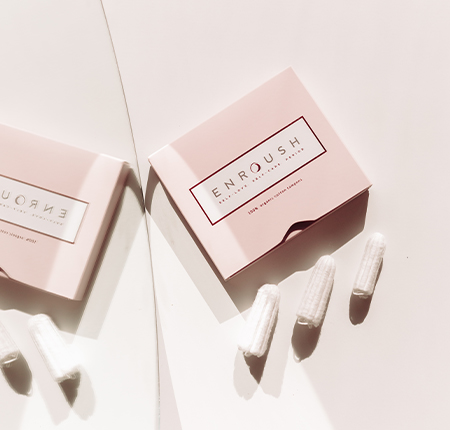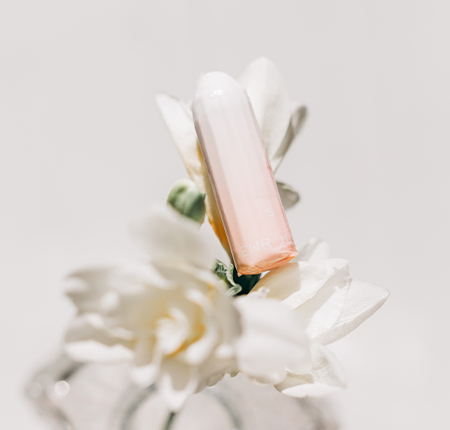
How many times have you felt that the pad is uncomfortable, or wished you could use an internal tampon at the beach so you could wear your bathing suit, but you didn't because you were afraid? Or because you didn't know how to use an internal tampon? We are here to tell you ALL about them.
Because just like external absorbents, internal tampons were created to absorb menstrual blood. Both are practical options with their own advantages and disadvantages, and every woman should be informed and allowed to run both options. A choice strictly based on your own preferences and without the influence of myths or the fear of being judged.
So what is the connection between tampons and virginity? How to insert and how long to keep the tampon? What else do you need to know about him? If you don't have anyone to talk to about these things or you're too embarrassed to ask, we're here to answer all your questions without hesitation.
What are internal tampons?
Tampons are single-use menstrual products made of soft, absorbent materials to be inserted into the vagina during menstruation to absorb menstrual blood and vaginal secretions. Once inserted into the body, you should not feel them or cause any discomfort.
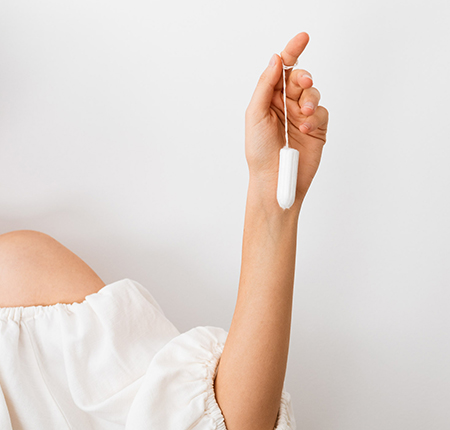
Opinions about internal tampons are varied, but many women prefer to use them because they offer more discreet protection than absorbent pads, and without their disadvantages (the feeling of a diaper, allergic reactions, the visibility of the sides of the absorbent pad on underwear, etc.).
They are available in several sizes and each size corresponds to the amount of liquid it can absorb. The higher it is, the more absorbency the tampon can handle a heavy menstrual flow.
For example, on our site, Enroush organic tampons are available in 3 different sizes (mini, normal and super), so you can choose the perfect protection according to your own menstrual flow.
OB vs. internal tampon - What's the difference?
The term "OB" is often misused when we are actually referring to internal tampons. But the two are not synonymous. Internal tampons are all menstrual products made of absorbent materials that are inserted into the body to absorb menstrual flow. And OB is just one of many other brands of internal tampons.
Basically when you say you use an OB on your period, it's like saying you use an Enroush on your period - meaning you just mention the brand. A more correct expression would be that you use OB tampons/OB internal tampons, or Enroush tampons/Enroush internal tampons. This way you mention both the product and its brand.
How to use the internal tampon correctly?
It is important to use the tampon correctly for both your intimate health and your comfort. With proper hygiene, you ensure that you only insert the tampon into the vagina, and not other bacteria that can cause infections. And by inserting it in the correct position, you ensure that you don't feel pain, discomfort or the presence of the pad when you sit down, move around, or at any time while you're wearing it.
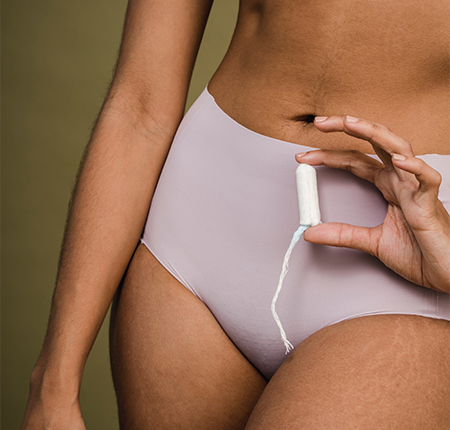
And all these things start from the preparation stage. Here's a list of what you should do to get ready to use tampons properly:
Wash your hands with soap and water so your hands are clean when removing the tampon wrapper. Thus, you reduce the risk of transmitting bacteria from your hands to your intimate area.
Sit in a position that is as comfortable as possible - it can be with one leg raised, or sitting on the toilet with your legs apart. Whatever helps you stay as relaxed as possible. If you are tense, inserting the tampon may be painful or uncomfortable. The more relaxed you are, the more painless tampon insertion will be.
Throw away the tampon if you drop it on the floor at any time before inserting it into your body. Repeat the whole process with a new clean pad.
Wash your hands when you're done.
Once informed of these basic hygiene rules, you are ready to insert it into your vagina and enjoy discreet period protection.
How is an internal tampon inserted? How deep?
If above we told you some basic things about how to prepare, now we explain exactly, step by step, how to insert the tampon correctly and how deep, so that you are protected and at the same time feel comfortable:
Use one hand to spread the labia, and the other to insert the tampon into the vaginal canal, using the index finger to push it. Remember to be as relaxed as possible so that it slides smoothly without resistance.
Change the angle slightly and gently push back, without force, if you still feel resistance when you push the pad in.
You'll know you've inserted the tampon correctly when you can't feel it anymore. At the entrance to the vaginal canal there are a lot of nerve endings, which explains why you feel discomfort when the tampon is not fixed deep enough and is positioned closer to the entrance.
Make sure you have access to the tampon string on the outside because you will need to pull it when you want to remove the tampon.
You will notice that as you use them, you will become more and more proficient with the internal tampons.
Even if everything isn't perfect at first, don't get discouraged! Even using pads took some trial and error before you knew exactly where to place them on your underwear to prevent leaks, didn't it? The same with the internal tampon - after a few uses you will learn how to insert it more and more easily, comfortably and without hassle.
How long does an internal tampon last?
The internal tampon changes according to each woman's flow. When it fills up, it must be changed and replaced with a clean one. The heavier the menstrual flow and the less absorbent the tampon is, the more frequently it needs to be changed. The more liquid the pad absorbs, or the less flow, the less often it needs to be changed.
As a guideline, however, it is recommended to change the tampon once every 4-8 hours. Under no circumstances should you wear a tampon for more than 8 hours, because menstrual blood left too long inside the vagina can promote the accumulation of bacteria and the appearance of infections or toxic shock. That is why it is not recommended to wear an internal tampon during the night, when you can sleep for more than 8 hours.
From what age can you use tampons?
Since the first menstruation. It's a myth that you can use tampons only after you start having sex, or only after you turn 18. Another myth is that a teenage girl's body is not yet ready for tampon insertion. Your body is primed to use tampons as soon as you get your first period.
So just like pads, tampons are equally safe and affordable for all girls and women to manage their periods. They are easy to insert, and if the girls are comfortable with them, the experience can be even more pleasant than with pads, because the pads do not feel and maintain the feeling of cleanliness.
To begin with, until you get used to it, you can use the Enroush MINI organic cotton internal tampons, which are thinner and smaller, so that their insertion is as comfortable as possible.
Are tampons dangerous?
Like external pads, internal pads are safe and comfortable as long as you use them correctly. Doctors recommend using them whenever we need to protect ourselves from leakage during menstruation, provided we follow the hygiene rules. Tampons become dangerous and risky for our health only when hygiene and safety norms are not respected.
For example, there is a risk of bacterial growth and Toxic Shock Syndrome (TSS) from tampons if you keep the same tampon in your body for more than 6-8 hours. You can find everything you need to know about STDs on our blog, but it's important to remember that the risk of toxic shock is very low if you use tampons hygienically (that is, you change them on time, you don't sleep with them, you don't forget them in your vagina, never reuse the same tampon, etc.).
And the ingredients from which the tampon is made are very important. Read the label and make sure that they are only natural ingredients, because you introduce them into your body month after month and they come into contact with the vaginal mucosa. We created Enroush tampons from 100% organic cotton, without dioxin, chlorine, or other toxic ingredients and chemical residues. This is how we make sure they are 100% safe for your body and pose no danger to your vaginal pH balance or intimate health.
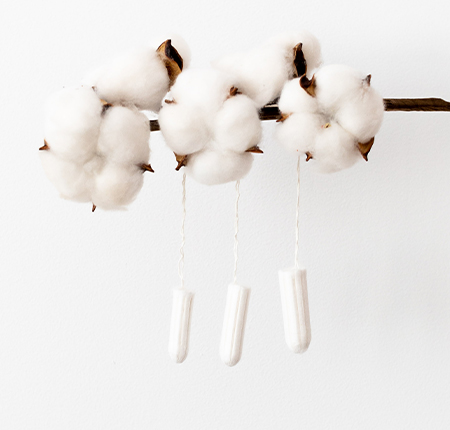
Internal tampons & virginity
Because there are so many myths surrounding the topic of virginity, tampons are still taboo for many teenage girls and young women who have not started their sex lives. Girls and women don't know at what age they can use the ob or tampon, or they don't for fear of losing their virginity.
So let's break free from the constraints of shame, fear, and misinformation, and see what the truth is about tampons and virginity.
Can you use the tampon if you are a virgin?
Yes, you can, and it's not your virginity that should dictate your choice between external absorbents and internal tampons, but how you feel more comfortable. Virginity is a Unicorn anyway - and you can read HERE why we say that - that is, an outdated social concept that does us no good. As soon as you get your first period, your body is always ready to use both external absorbents and internal tampons, whether you're a virgin or not.
Also, although they say to use smaller tampons if you're a virgin to avoid "breaking" the hymen, there are actually no internal tampons for virgins. They're just different sizes and absorbency to give you the right protection based on your menstrual flow. So what we call teenage tampons are just smaller sized products that absorb less liquid and fill up faster in heavy flow.
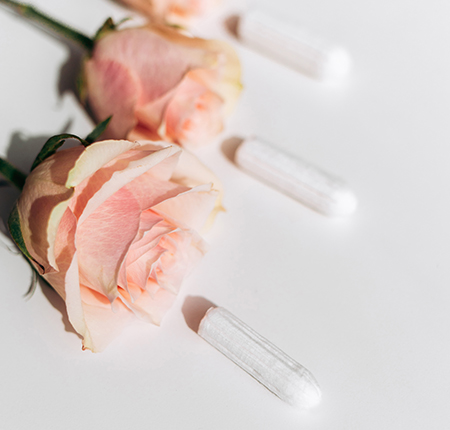
The hymen is elastic and already has one or more holes that allow menstrual blood to drain, so it can allow even a larger tampon to be inserted into the vagina without breaking. So even if at first you could use smaller tampons until you get used to them, along the way you can also choose bigger tampons for heavy flow days, even if you're a virgin. By choosing the most suitable absorbency and size for the amount of menstrual blood you lose, you ensure the protection you need every day.
Can you lose your virginity from the tampon?
No, the two are not related. As I've already said above, virginity is not an actual medical condition, or something you lose. So not only can you use OB if you're a virgin, but any internal tampon, even a larger size if that's what you need for your flow.
However, let's also debate WHY virginity has nothing to do with tampon use.
Virginity is related to sexual experience - the lack of it, to be exact. Basically, things are simple: you are considered a virgin as long as you have not yet had sexual contact and the hymen is intact. From here, we can draw two conclusions, both of which confirm that you cannot lose your virginity from an internal tampon:
Virginity is about sex, while the tampon is about menstrual hygiene, a normal and natural function of the body. In fact, by associating the tampon with the loss of virginity, we are doing nothing more than sexualizing tampon insertion. There is nothing sexual about inserting an internal tampon into the vaginal canal to protect against menstrual discharge, it is not a sexual experience, so we cannot talk about losing your virginity.
Virginity is a contradictory concept anyway. On the one hand, it assumes you still have an intact hymen, which may not happen. The hymen is a thin and elastic tissue that can stretch or open more not only during penetrative sex, but also during intense physical exertion, injury or simply for no reason. And on the other hand, the sexual experience is not limited to vaginal sex. What about oral sex, masturbation, and other non-penetrative forms of intimate contact that give you sexual experience and thus eliminate the concept of virginity, but leave no evidence of the hymen? The bottom line is that the presence and appearance of the hymen is totally irrelevant to virginity, and in this context, whatever changes tampon use may have on the hymen, has nothing to do with virginity loss.
What are the best internal tampons?
Ok, so how do we choose the best tampons? Well, the intimate health chapter is one to which we encourage you not to shy away from applying strict criteria. It is crucial to choose only good tampons that you can use with confidence every period without fear of their effect on your body.
So let's go over what I was telling you earlier about how important it is to check the ingredients to minimize the risks of tampons. Doctors recommend using internal cotton pads, processed as naturally as possible, without toxic content. You just don't want to be putting dangerous substances and hormone disruptors into your body every month.
Have you ever wondered why you can't even find the list of ingredients on many conventional products? Precisely because of the high content of chemicals.
Did you notice how white the pads are? Most of the time chlorine or dioxin is used to bleach them, substances that are toxic to the health of your vagina. Often plastic, perfumes and other chemical residues are not missing from the composition of menstrual products, which is why they can cause all kinds of allergies, irritations, changes in menstrual flow, and even hormonal imbalances or other health problems.
When we created Enroush internal tampons, we took inspiration from your body and nature, and made sure we didn't use any of the harmful substances listed above. Enroush tampons contain only 100% organic cotton and nothing else, which we process according to GOTS standards. That means no dioxin, chlorine, fragrance, plastic or synthetic fibers. No threats to your intimate and reproductive health. Just the fine touch of nature for your vagina, so you can enjoy safe, healthy and sustainable periods without allergies or discomfort.
Myths & truths about tampons
We've already established that tampons are safe as long as you use them hygienically and make natural choices. I have explained to you step by step how to insert a tampon and I have already destroyed the virginity myth regarding tampons.
But the list of myths goes on, and we're here to dispel the stigma, fear, and unfounded worry that comes with rumors and misinformation. So let's see what other myths are circulating about internal tampons and find out what the reality is and what medical specialists say.
Can the internal buffer be lost or stuck in the body?
No, this is impossible. It has never happened to lose a tampon in the body, because it has nowhere else to go but stay in the vagina. Indeed, it is possible to feel a stuck internal tampon, especially if the string on the outside breaks (unlikely), or if you forgot you already had a tampon and inserted another one, pushing the first deeper.
Even so, the tampon cannot be lost in the body. Only the entrance to the vagina is large enough for the size of the tampon. At the other end of the vagina is the cervix, the opening of which is much too small to allow a tampon (even a small one) to pass through and reach the uterus.
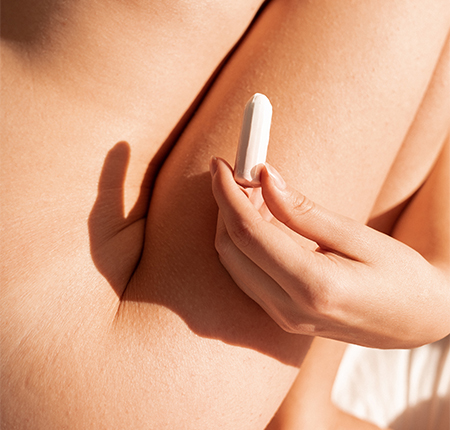
Here's what to do, though, and what NOT to do, if you happen to be unable to remove the tampon:
Relax: The more tense you are, the more resistance you will have when you try to remove it. Sit in a comfortable position, take deep breaths and take your time. Just like when you entered it. The squatting position might give you a better angle to remove the tampon more easily.
Try to find the cord: it could be right inside, near the entrance to the vaginal canal. With clean hands, try to insert two fingers to grasp the string and gently pull it out.
It may be too dry: If you can't pull the tampon out because you feel resistance, it may not be full enough. In the last days of menstruation when the flow is weak, it is possible that it will remain dry even after 6-8 hours have passed since the insertion, which is why it is harder to remove and you have the impression that it is stuck. You can use a little water or lubricant on your fingers to moisten it and make it easier to remove.
Don't expect it to come out on its own: to wear it comfortably, you have fixed the tampon quite deep in the vagina, and the probability that it will come out on its own is very small. You are more likely to forget it there, which is dangerous. If you still can't get it out, visit your gynecologist.
Do not under any circumstances use tweezers or other dangerous tools: because they can cause you injuries. It's about your health and there's no shame in asking a specialist for help!
Can the internal tampon come out when we go to the toilet?
Not. If you fix the tampon correctly, it should not come out when you use the toilet. The vagina has an opening for the removal of menstrual blood, while the urethra and intestines also have separate openings that do not interact with the tampon. So you don't even need to change it every time you go to the bathroom, just when it gets full, depending on your menstrual flow.
Can internal tampons stop the flow of menstruation?
It's another myth. Internal tampons absorb the flow of menstruation, they do not stop it. Yes, you may feel like you're clean and your menstrual blood has stopped, but that's only because the tampon's absorption temporarily stops the leakage outside your body. That's why when the tampon fills up and can't absorb any more fluid, menstrual blood can leak past or through it.
Can internal tampons cause cancer?
In the long term, dioxin and other toxic substances in contact with our body can become carcinogenic. While we currently don't have enough studies to confirm how bad the chemicals in conventional tampons can be, we can't ignore the correlations with cervical cancer or endometriosis. And caution and prevention are always preferable to cure.
You can best protect yourself from the risk of carcinogenic or harmful substances by making sure that they are not present at all in your menstrual products. Enroush tampons contain nothing but 100% organic cotton for the safest and healthiest menstrual care.
Can the internal tampon come out when we do sports or go to the pool?
Again, no. To wear the tampon as comfortably as possible and to protect you from leaks as effectively as possible, you need to fix it deep enough in the vaginal canal so that it does not slip out. Not even when you do sports or when you swim. This explains the fact that you can wear an internal tampon to the pool without worrying about leaks in the water, because they will be absorbed directly into the vagina. It is precisely because of these advantages that many women use internal tampons at sea as their preferred method of protection.
Can the internal tampon be used when we have an IUD?
Let's also talk about tampons and IUDs. Internal tampons are only inserted into the vaginal canal, while the gynecologist mounts the IUD in the uterus. So theoretically the two do not touch, and we can use internal tampons even if we have an IUD.
But it is also important to know that the extraction threads of the IUD remain in the outer part of the vagina. So it is not recommended to use internal tampons in the first 3-4 months after the cetrillet insertion, because there is a possibility of pulling on those threads when you remove the tampon. It is best to ask your gynecologist, who will recommend how long to wait until you can safely use internal tampons. Sometimes it's only 4 weeks, sometimes it can be 2 to 4 months.
